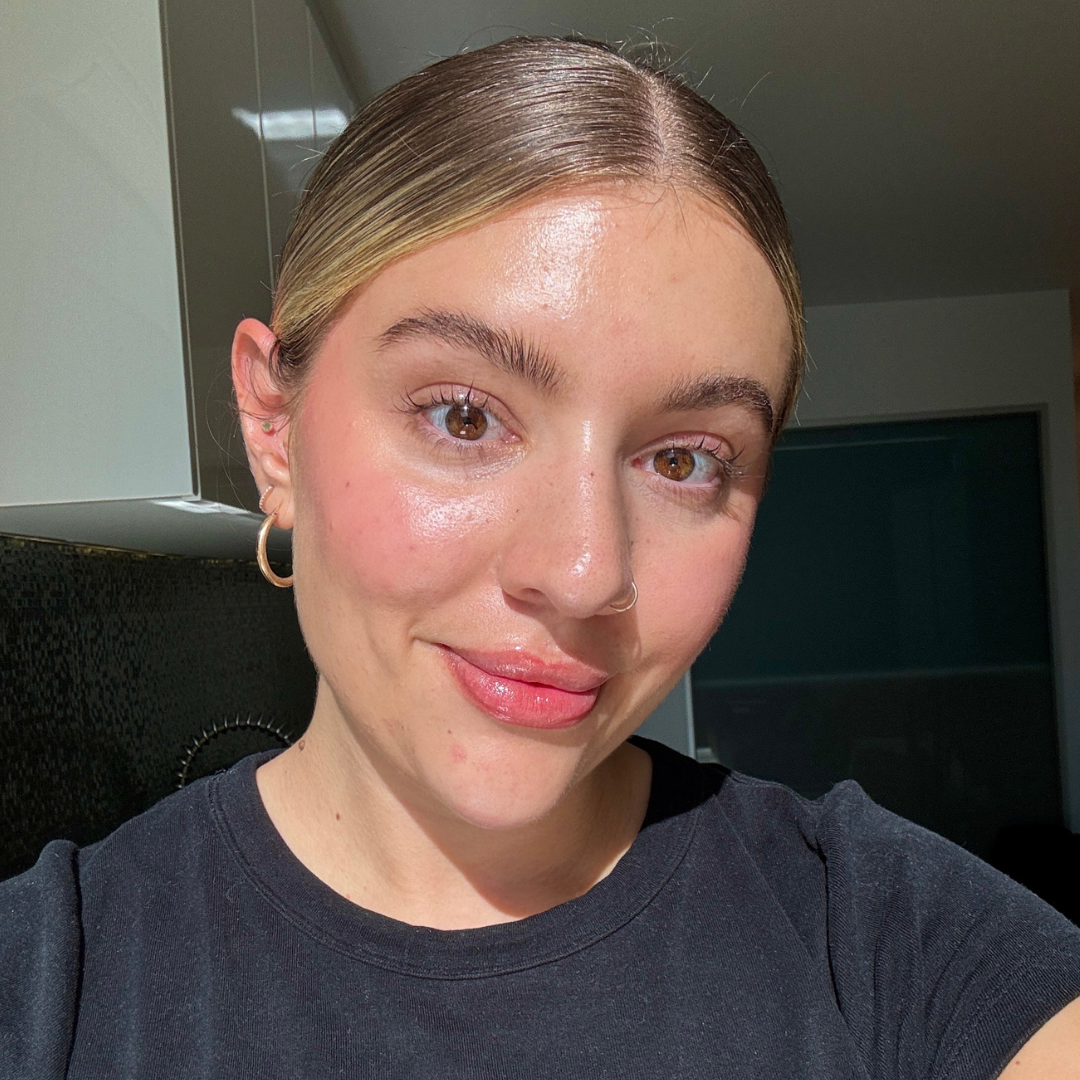Why Everyone on TikTok Is Talking About DMK Enzyme Treatment—And What Dermatologists Think
The celeb facial behind Madelyn Cline’s glow


I was scrolling through TikTok a couple of weeks back, when I suddenly came across a video that had me instantly intrigued. Outerbanks star Madelyn Cline was getting a facial – but it was unlike anything I'd seen before. Reading the caption, I discovered the actor was undergoing a 'DMK Enzyme Treatment,' which meant she had to lie utterly still for 45 minutes while the product she was wearing hardened and caused certain areas to freeze and 'pulse.' This mysterious treatment has cropped up several times of late, meaning I had to speak with experts to discover what it's all about. Here's what I learnt...
What is the DMK Enzyme Treatment?
Developed by Danne Montague-King, DMK Enzyme Therapy is "a professional, in-clinic skin treatment designed to improve skin function. It’s sometimes called a 'skin workout' because the mask hardens and contracts," begins Dr Sonia Khorana, Cosmetic Doctor and Dermatology Expert. "The treatment uses 'transfer messenger enzymes,' which are proteins that act as catalysts for chemical reactions in the skin."
Interestingly, you won't find a full ingredients list of what's in this treatment anywhere publicly, but Dr Khorana says that typically, you will find the following: enzyme complexes (proteolytic enzymes), amino acids & proteins (to support skin repair), botanical extracts (antioxidants, anti-inflammatory support), and minerals (to aid skin cell processes).
The treatment has actually been around for around 40 years, but only really gained in popularity lately, especially in the celebrity circuit. "Celebrities like this treatment as it gives them an instant glow," says Nadia Aminian, Senior Aesthetician at the Taktouk Clinic. "It's great for pre-events."
It's also become particularly noticeable online thanks to certain features, including the way skin can 'pulse' underneath the mask during those 45 minutes, and the after-effects. "One of its most recognisable features is the 'plasmatic effect,'" notes Dr Emmaline Ashley, Cosmetic Doctor. "This involves a temporary network of flushed capillaries visible after the mask is removed. This happens because the mask’s pressure and occlusion increase superficial blood flow, which can leave the skin looking brighter and more radiant for a short time."
Who is it best for?
Dr Khorana explains that in terms of potential benefits, there are a fair few, making DMK Enzyme Treatment a good option if you're wanting a treatment that could improve microcirculation, support lymphatic drainage (reducing puffiness), assistance with acne, pigmentation and rosacea (as part of a wider plan) and a noticeable glow post-treatment. Skin also is super soft afterwards—just watch Madelyn Cline's reaction video where she first touches her skin.
It's important to note, however, that the jury's still out on whether a DMK Enzyme Treatment really acts as a beneficiary long-term treatment, or just one that offers more instant gratification. "While some claims include deeply 'detoxifying' the skin, there is no high-quality, peer-reviewed evidence that supports this," argues Dr Ashley. "Most benefits, like a smoother texture, glow from increased circulation, and mild exfoliation, are temporary and cosmetic."
Celebrity news, beauty, fashion advice, and fascinating features, delivered straight to your inbox!
Dr Khorana also points out that it's "not suitable for those with certain vascular conditions, skin infections, or severe eczema flare-ups," and that it's absolutely essential it's performed by a practitioner who is well-trained and knows their stuff.
The details: price, pain & downtime
While the treatment is generally well-tolerated, you should expect some discomfort, particularly in the last 10-15 minutes. "Once the peel is applied, it starts to begin its plasticisation phase. During this phase, the mask hardens to the point where patients are very restricted in movement. It's generally bearable however the peel can tingle, itch and throb as the blood flow gets stimulated," explains Aminian.
You may experience a little flushing and redness after an appointment, which should subside within 24 hours. Other than that, there is little downtime to consider.
In terms of price and availability in the UK, you can search for a clinic near you (and the price they charge) here. You can expect to pay around £100-£200 per treatment.

Rebecca is a freelance beauty journalist and contributor to Marie Claire. She has written for titles including Refinery29, The Independent, Grazia, Coveteur, Dazed, Stylist, and Glamour. She is also a brand consultant and has worked with the likes of The Inkey List on campaign messaging and branded copy. She’s obsessed with skincare, nail art and fragrance, and outside of beauty, Rebecca likes to travel, watch true crime docs, pet sausage dogs and drink coffee. Rebecca is also passionate about American politics and mental health awareness.